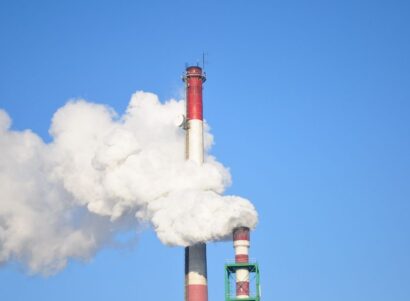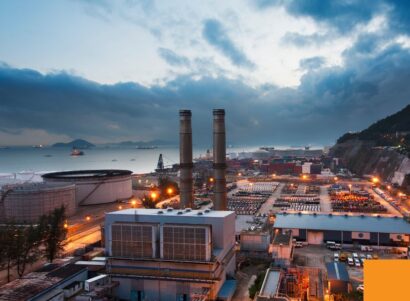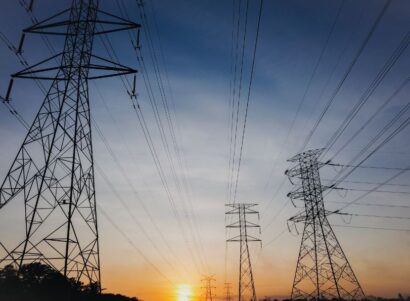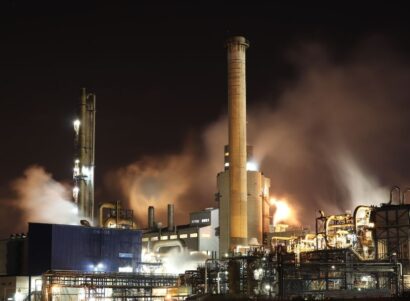Background
Rapid advancements in technology have made it possible to detect and measure methane emissions with new precision. Methane-detection satellites and aerial surveys have shown that drilling and extracting oil and gas–“upstream activities” in the oil and gas supply chain–often cause methane “super-emitter” events, defined by the EPA as an emission rate of at least 100 kilograms of methane per hour.
PSE Healthy Energy has been studying the composition of natural gas throughout the supply chain, from the upstream infrastructure like production wells, storage tanks, dehydrators, unlit flares, and compressors, to downstream infrastructure like distribution lines and gas-burning home appliances, including stoves, water heaters, and fireplaces. This paper studies uncombusted gas–gas that is leaked, vented, or otherwise released from the gas system. PSE also pursues research on the hazardous air pollutants from combusted gas–or gas that is burned–such as burning gas to cook.
We have found time and again that, throughout the supply chain, natural gas is made of more than methane alone. It also contains hazardous air pollutants, including the carcinogen, benzene, that are emitted alongside methane whenever uncombusted natural gas is released.
The presence of hazardous air pollutants in natural gas poses a threat to human health, especially for oil and gas workers and fenceline communities who work and live near super-emitters. More than 17.6 million people reside within one mile of an active oil or gas well, but impacted communities have lacked any tools to help them understand the health risks of super-emitters in their backyards. By developing a model to calculate the concentrations of hazardous air pollutants in gas at production facilities across the country, this paper, published in Environmental Research Communications, helps to fix that.
Characterizing Upstream Natural Gas
PSE’s team identified 8,012 natural gas analyses from 11 of the top natural gas-producing states and 19 of the top methane gas-producing basins. These analyses were collected by reviewing more than 180,000 regulatory documents from upstream gas facilities, primarily air permit applications. Using this data, we:
- Built the largest existing database of hazardous air pollutant concentrations in upstream natural gas, covering facilities that cause 46% of reported upstream methane emissions.
- Developed a scalable model that can be used to estimate gas composition for US upstream oil and gas facilities that lack publicly-available data on the concentration of hazardous air pollutants in their gas.
“Our data-driven approach allows us to go beyond simplistic assumptions to get a better picture of what’s being emitted along with methane,” said PSE scientist Jeremy Domen.
PSE’s gas composition database and statistical models can be combined with air quality models, making it possible to calculate the extent to which methane super-emitter events release hazardous air pollutants that put human health at risk.
Key Insights
- Nine chemicals classified as hazardous air pollutants by the US EPA were detected in natural gas samples. Specifically, benzene, toluene, ethylbenzene, and xylene, known together as “BTEX,” were reported in the majority of samples. Exposure to these pollutants can harm the reproductive, immune, hematologic, nervous, and respiratory systems. Long-term exposure to benzene can lead to cancer.
- We found that the equipment makes a big difference in the concentration of hazardous air pollutants produced. For example, the data show that gas samples from hydrocarbon liquid storage tanks contained 59 times higher average benzene concentrations than gas-containing equipment such as pipelines. This is because when the stored liquid experiences a big change in temperature or pressure, such as when a valve opens, some of the liquid “flashes” into a gas (called “flash gas”) taking with it high levels of the BTEX pollutants that were present in the hydrocarbon liquid.
- Natural gas from the Permian and Denver basins had the highest mean benzene concentrations, with the lowest mean concentration in the Piceance basin.
- Better characterizing super-emitters–such as reporting associated equipment, geology, and local, overall composition data–helps us better estimate the amount of hazardous air pollutants co-emitted with the methane.
“Methane super-emitters from oil and gas facilities aren’t just a climate problem. They also emit hazardous air pollutants,” said lead author and PSE scientist Sebastian Rowland. “This dataset and these models enable us to estimate those health-harming pollutant emissions and better understand their impacts to local communities.”
Conclusions
- Given significant variation in natural gas composition, greater transparency is critical for understanding the local air quality impacts and health risks of uncombusted natural gas Such transparency could be accomplished by systematic and timely reporting of gas composition data to a public, centralized database.
- Our database and scalable model are critical tools to calculate emission rates of hazardous air pollutants released from natural gas infrastructure, and to understand the impacts on air quality and risks to human health from upstream methane emission events.
This paper is foundational to PSE Healthy Energy’s Methane Risk Map, an interactive digital tool coming in summer 2025. The Methane Risk Map integrates satellite methane data with our extensive gas composition research, regulatory-grade dispersion modeling and demographic information to create the clearest picture yet of the human health risks of methane-linked pollutants. This research is part of PSE Healthy Energy’s Methane + Health Initiative, a multi-year research initiative to improve the scientific and public understanding of the link between methane emissions, air pollution, and public health.

 Study
Study






